Legal Data
Click on each entry to see their full assessment report.

- Completed Investigations Based on Open Source Intelligence Sources
- Contractual Documents and Related Records
- Digital Evidence and Records of Investigation Prior to Court
- Evidence in Court
- Non-standard Public Records
- Older Open Source Intelligence Sources
- Open Source Intelligence Sources of Current Conflicts
- Proceedings in Court
Portable Media
There are seven entries in the 2021 BitList relating to the 'Portable Media' species. Click on each entry below to see the full description.

Case Studies and Examples
The June 2020 Dutch Digital Heritage Network (DDHN) report, Endangered digital heritage on portable media, an investigation into the national scale of the problem, identified that at about 40% of Dutch heritage institutions, the material on portable media is in danger of being lost.
Please note: This report is written in Dutch. With a little help from Google Translate you will be able to read it all.
For example, Born Digital Images Held Offline on Portable Storage Media Devices face material challenges to preservation when no refreshment plan or replication is in place. There are aggravating conditions particular to the different storage media devices holding these images (click on each of the entries listed above for a full description of aggravating conditions). The general recommended advice for all portable storage media types is to plan and implement refreshment and replication as early as possible, moving the data to new forms of storage every 5-10 years.
Please note: This example was previously a standalone entry in the 2019 BitList. However, the 2021 BitList Jury agreed that separating the risks relating to born digital images, which can apply to multiple kinds of portable storage media entries, could easily be overlooked in that respect. Rather than sit as a standalone entry in the list, it is presented here with an invitation for those in the digital preservation community to share their own case studies with these materials to add to this page.
Research Outputs
Click on each entry to see their full assessment report.

Case Studies and Examples
For example, Maritime Archaeological Archives can include at-risk materials like photographs, maps and plans, field notebooks, post-excavation finds analysis and other analytical records. While there are trusted custodians of this data such as ADS, DANS or the British Museum, as well as in oceanographic research agencies, records of excavations in marine environments that fall outside the jurisdiction of terrestrial heritage services are especially at risk when there is no custodian, no preservation mandate, poor documentation and/or dependence on proprietary and non-standard data types. The first major challenge in the effort to preserve these materials is in identifying and sustaining a custodian. The second major challenge is identifying and engaging with subject matter experts as early as possible to understand innovative data recording technologies and address problems of format dependence and documentation.
Geomagnetic Data and Software offers another example of materials that can become at risk when there is a lack of preservation commitment, planning, identified repository, or capability in the current repository. The data, software and supporting paradata relating to Earth's magnetic field and Earth-Sun environment can include declination, geomagnetic field surveys and observations, field models and magnetic indices, and data from geomagnetic observatories. Given the range of different kinds of geomagnetic data and software, it is crucial for preservation to identify and engage with subject matter experts as early as possible to better understand and address problems arising from undocumented data cleaning, disassociation with documenting, lack of conformance or validation against standards, poorly managed intellectual property rights, and bespoke or undocumented software.
For research data, software, and outputs in and across disciplines and domains, the BitList Jury recommends the Core Trust Seal for institutions and repository assessments, as it incorporates many of the characteristics previously measured by the World Data System. The Jury also supports ongoing efforts to engage with subject matter specialists and researchers to examine and develop data management planning tools.
Please note: These examples of Maritime Archaeological Archives and Geomagnetic Data and Software were previously standalone entries in the 2019 BitList. The 2021 BitList Jury recommended their incorporation into this overview of the 'Research Outputs' species page to illustrate the complexity of research data and outputs with documentation requirements that may only be known to subject matter experts. Rather than sit as standalone entries in the list, they are presented here to emphasize the importance of identifying and collaborating with subject matter experts in and across research disciplines, inviting those in the digital preservation community to share their own case studies add to this page.
Sound and Vision
Click on each entry to see their full assessment report.

Interpreting and Using The BitList
What is the Bit List?
|
The Global Bit List of Endangered Digital Species (Bit List) is first and foremost an advocacy tool. |
The Bit List describes a range of digital materials in varied organizational settings which, in the experience of the global digital preservation community, face distinct and imminent challenges. These challenges may be as much to do with accountability, policy or business process as technological obsolescence or media decay.
By identifying these challenges and by providing elementary recommendations about how the risks can be tackled, the DPC seeks to provide impartial evidence and international support to specific preservation actions and policies in any context.
How are the entries contributed and verified?
|
Entries to the Bit List are nominated by the community, who are at the forefront of digital preservation efforts, and reviewed by international organizations which represent global expertise in the preservation of the listed digital species. |
Although all digital materials can fall within the scope of the list, the published editions of the Bit List are not a complete account of all digital materials at risk— only those items which members of the community recognize as being at risk are included.
Consequently, the absence of a digital material on the list should not be taken as evidence that it is not at risk, but instead simply that the community which has compiled the list has not encountered any explicit risks or has no experience with these materials.
Once nominations have been collected and collated, the Bit List Council—comprising experts which represent global expertise in the preservation of the listed digital species—evaluate the entries before recommending their final list. The new, updated list is published on World Digital Preservation Day, providing digital preservationists around the globe with an updated advocacy tool on a day designed to draw attention to this real and current challenge.
The Bit List offers a provisional commentary with the recognition that the extent of the digital domain, the complexity of the threats, and the sophistication of emerging solutions mean that no process could ever fully capture the risks and challenges faced by digital content around the world. It is published and reviewed with the understanding that new risks are continuously arising; every day and (inevitably) between editions of the Bit List.
How to read and use the Bit List
|
By providing real, illustrative examples of at-risk digital materials alongside their identified aggravating risk factors and recommendations for practical action, users of the Bit List may present the information to support their own advocacy activities and to make a strong independently verified case for digital preservation action. |
Entries on the Bit List are presented in a published report and are also available online. Entries are grouped both by risk ‘classification’ and digital ‘species’, allowing users to approach and navigate the list either way.
Entry Descriptions and Examples
Each entry on the list is given a short title and a longer description. It is described in general terms, then a series of examples are provided. These examples are illustrative, not exhaustive; they can include cases where entries are broadly defined or offer specific instances or items.
Users of the Bit List are encouraged to identify and assess their own examples of digital materials at risk—to determine whether a digital object currently in their possession, or for which they have a current or imminent preservation responsibility, fits or aligns with the examples provided on the list.
Aggravating Conditions and Good Practice
Each item includes examples of Aggravating Conditions which amplify the risks a digital object faces, and Good Practice that would reduce the risk. These are also implied recommendations for addressing and reducing risks to be followed in the timescale indicated. In most cases, a fuller assessment is also suggested. By implication, the actions that would arise from such an assessment are not likely to be trivial.
Recognizing that entries are very broadly defined, digital materials can be at more or less risk depending on local circumstances. There is a greater risk, and therefore greater urgency to act, in the presence of aggravating conditions which can be delineated. So, while an entry may be classified as Vulnerable in generic terms, any example of that entry may reasonably be described as Endangered or Critically Endangered in the presence of aggravating conditions. Conversely, in the presence of good practice, specific digital materials may be designated as Endangered to Vulnerable or Lower Risk.
Contribute to the Bit List and support digital preservation globally
|
The greater the level of community input to the Bit List, the better our view of at-risk digital materials around the world, and the stronger our case for digital preservation. |
The Bit List is designed to be collaborative, iterative and provisional and the current call for nominations to the 2023 Bit List is now open!
If readers of the Bit List are aware of significant digital collections that are at material risk but do not match up with any of the broad examples given, they are encouraged to draw these to the attention of the Bit List Council either through the current call for nominations, or directly through the DPC’s Head of Advocacy and Community Engagement. These will be reviewed in time for publication of the next scheduled comprehensive review and revision for November 2023.
Where digital materials face an imminent extinction event before that, their evaluation may be accelerated, and an addendum published to the Bit List in order to provide the timely, impartial and expert advocacy that may be required.
Corrections, comments and nominations are welcome now!
The Bit List Taskforce and Jury
The Digital Preservation Coalition gratefully acknowledges the support of the worldwide digital preservation community in the compilation of The BitList.
In particular, we are grateful to members of the 2022 BitList Taskforce who supported the interim review of 2021 entries to assess and identify 2022 trends towards increased or reduced risk:
-
Paul Stokes (Jisc)
-
Ruth Cammies (Open University)
-
Tom Shaw (Lancaster University)
-
William Kilbride (DPC)
The 2021 BitList Jury who supported the comprehensive review of existing and nominated entries in 2021:
-
Paul Stokes (Jisc)
-
Ruth Cammies (Open University)
-
Elizabeth England (National Archives and Records Administration)
-
Tom Ensom (Tate)
-
Emma Hancox (University of Bristol)
-
Patricia Herterich (Digital Curation Centre)
-
William Kilbride (DPC)
-
Micky Lindlar (Technische Informationsbibliothek (TIB)
-
Kirsty Lingstadt (University of York)
-
Annette Mills (National and State Libraries Australia)
-
Alexandra Mitchell (University of Salford)
-
Svenia Pohlkamp (nestor)
-
Arran Rees (University of Leeds)
-
Sebastian Roncin (Bacardi-Martini)
-
Anthea Seles (International Council on Archives)
-
Melanie Swalwell (Swinburne University of Technology)
-
Sara Day Thomson (University of Edinburgh)
-
Tamara van Zwol (Digital Heritage Network)
The 2022 revision and interim report reviews and feedback from the staff of the DPC and from the DPC’s Advocacy & Community Engagement Subcommittee:
-
Fabi Barticioti (LSE Library)
-
Ruth Cammies (Open University)
-
Lisa Griffith (Digital Repository of Ireland)
-
Emma Hancox (University of Bristol)
-
Patricia Herterich (Digital Curation Centre)
-
Annette Mills (National and State Libraries of Australia)
-
Mark Reynolds (Houses of the Oireachtas)
-
Sebastien Roncin (Bacardi-Martini)
-
Thomas Shaw (Lancaster University)
-
Paul Stokes (Jisc), Chair of the Advocacy & Community Engagement Subcommittee
-
Dorothy Waugh (University of York)
-
Emma Yan (University of Glasgow)
-
Daphne Yuen (HSBC)
The additional expertise provided generously by subject matter experts.
The Bit List Council
The production of the Global Bit List of Endangered Digital Species is made possible through the generous support of the Bit List Council and their respective networks. All entries to the Bit List are reviewed by these dedicated organizations which represent global expertise in the preservation of the listed digital species. The Digital Preservation Coalition gratefully acknowledges all of their support, commitment and contributions towards the publication of the Bit List.
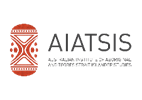 |
|||||||||||
 |
 |
 |
|||||||||
 |
 |
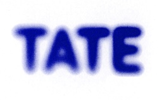 |
 |
||||||||
 |
 |
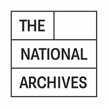 |
|||||||||
 |
 |
 |
 |
||||||||
 |
 |
 |
 |
||||||||
 |
 |
||||||||||
| |
 |
 |
|||||||||
 |
 |
||||||||||
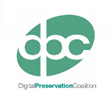 |
|||||||||||
The 'Bit List' of Digitally Endangered Species
The Global List of Digitally Endangered Species – The Bit List – offers an accessible snapshot of the concerns expressed by the global digital preservation community with respect to the risks faced by diverse types of digital content in varied conditions and contexts. It provides an elementary assessment of the imminence and significance of the dangers faced by different, and at times overlapping classifications of digital materials. By identifying the urgency of action and significance of content, The Bit List draws attention to those digital materials that, in the view of the global digital preservation community, require urgent action to remain viable.
READ THE 2022 BIT LIST OF DIGITALLY ENDANGERED SPECIES
Click on each of the risk classifications to see the entries for each category, browse the Bit List by digital species or click each entry for the full report:
Risk Classifications
-
LOWER RISK
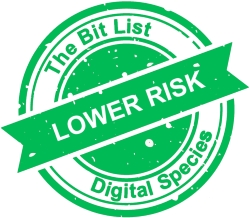
Digital materials are listed as Lower Risk when it does not meet the requirements for other categories but where there is a distinct preservation requirement. Failure or removal of the preservation function would result in re-classification to one of the threatened categories.
There are no entries classified as Lower Risk in this edition of the BitList.
-
VULNERABLE

Digital materials are listed as Vulnerable when the technical challenges to preservation are modest but responsibility for care is poorly understood, or where the responsible agencies are not meeting preservation needs. This classification includes Lower Risk materials in the presence of aggravating conditions.
-
ENDANGERED
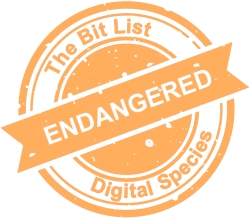
Digital materials are listed Endangered when they face material technical challenges to preservation or responsibility for care is poorly understood, or where the responsible agencies are poorly equipped to meet preservation needs. This classification includes Vulnerable materials in the presence of aggravating conditions.
3D Digital Engineering Drawings
Born Digital Photographs and Video shared via Social Media or Uploaded to Cloud Services
Cloud-based Services and Communications Platforms
Completed investigations based on open source intelligence sources
Content on cloud video services produced by the service provider
Contractual Documents and Related Records
Corporate Records of Long Duration on Network Drives,
Intranets and EDRMSCurrent Portable Magnetic Media
Current Portable Optical Media
Current Portable Solid-State Media
Digital music and ephemera shared on social media
Digital recordings published via cloud-based music sharing platforms
Digitally published sheet music
Electronic hospital and medical records
Master Digital Music and Sound Recordings
Pre-Production TV and Movie Materials
Published research data appended to journal articles
-
CRITICALLY
ENDANGERED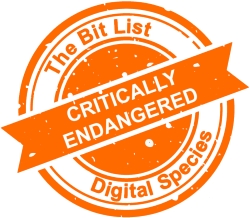
Digital materials are listed Critically Endangered when they face material technical challenges to preservation, there are no agencies responsible for them or those agencies are unwilling or unable to meet preservation needs. This classification includes Endangered materials in the presence of aggravating conditions.
Community generated content in arts and heritage
Consumer social media free at the point of use
Correspondence and records of research
Data posted to defunct or little-used social media platforms
Digital Archives from Public Enquiries and Commissions
Digital archives of community groups
Digital Archives of music production
Digital Evidence and records of investigation prior to court
Legacy research web collections
Massively Multiple Online Gaming Platforms and Experiences
Media Art by deceased artists or defunct workshops
Non-current Hard Disk Technologies
Non-current Portable Magnetic Media
Non-current Portable Optical Media
Non-current Portable Solid State Media
Old or non-current offline video games
Old or non-current video games
Open source intelligence sources of current conflicts
Pre-WWW ViewData and Teletext Services where no Archival Agency has Captured and Retained the Signal
Records of Non-Governmental Agencies
Records of Quasi Non-Governmental Agencies
Supporting Digital Materials for Museums and Galleries
-
PRACTICALLY
EXTINCT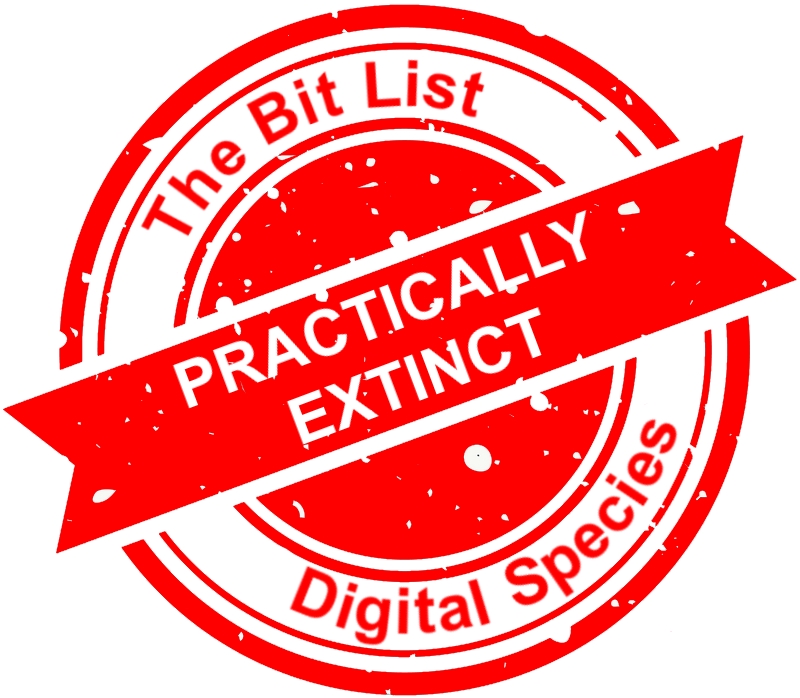
Digital materials are listed as Practically Extinct when the few known examples are inaccessible by most practical means and methods. This classification includes Critically Endangered materials in the presence of aggravating conditions.
-
CONCERN
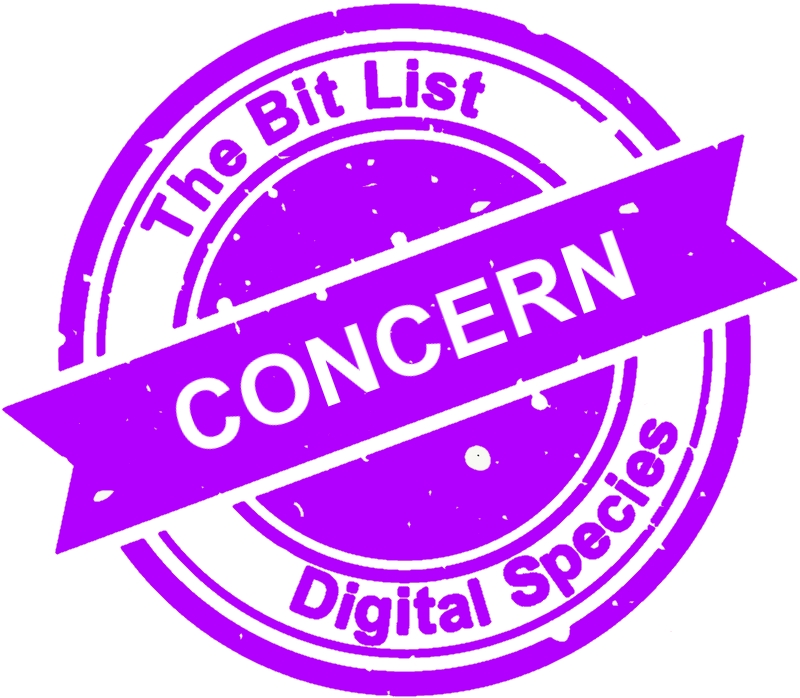
Digital materials are listed as of Concern when an active member of the digital preservation community has expressed a legitimate concern but the concern has not yet been assessed by the BitList jury. They will be assessed for inclusion in the subsequent year.
There are no entries classified as Of Concern in this edition of the BitList.
Digital Species
Species Categories
-
Nominate at-risk digital materials now!
The Bit List remains open for nominations year round
NOMINATE AT-RISK DIGITAL MATERIALS
If you are unable to access the Google form to nominate your at-risk digital materials or you would like to prepare your information in advance,
please download and complete the Excel version of the form.
Completed Excel forms may be sent to Sarah Middleton.
Access older versions of and introductions to the Bit List, now superceded:
-
Introduction to the Bit List of Digitally Endangered Species 2021
The 'Bit List' of Digitally Endangered Species
The Global List of Digitally Endangered Species – The Bit List – offers an accessible snapshot of the concerns expressed by the global digital preservation community with respect to the risks faced by diverse types of digital content in varied conditions and contexts. It provides an elementary assessment of the imminence and significance of the dangers faced by different, and at times overlapping classifications of digital materials. By identifying the urgency of action and significance of content, The Bit List draws attention to those digital materials that, in the view of the global digital preservation community, require urgent action to remain viable.
Access the full Bit List List Report for 2021
-
Watch the Introduction to the Bit List of Digitally Endangered Species 2021
Click on each of the risk classifications to see the entries for each category, browse the Bit List by digital species or click each entry for the full report:
Risk Classifications
-
LOWER RISK

Digital materials are listed as Lower Risk when it does not meet the requirements for other categories but where there is a distinct preservation requirement. Failure or removal of the preservation function would result in re-classification to one of the threatened categories.
There are no entries classified as Lower Risk in this edition of the BitList.
-
VULNERABLE

Digital materials are listed as Vulnerable when the technical challenges to preservation are modest but responsibility for care is poorly understood, or where the responsible agencies are not meeting preservation needs. This classification includes Lower Risk materials in the presence of aggravating conditions.
-
ENDANGERED

Digital materials are listed Endangered when they face material technical challenges to preservation or responsibility for care is poorly understood, or where the responsible agencies are poorly equipped to meet preservation needs. This classification includes Vulnerable materials in the presence of aggravating conditions.
3D Digital Engineering Drawings
Born Digital Photographs and Video shared via Social Media or Uploaded to Cloud Services
Cloud-based Services and Communications Platforms
Completed investigations based on open source intelligence sources
Content on cloud video services produced by the service provider
Contractual Documents and Related Records
Corporate Records of Long Duration on Network Drives,
Intranets and EDRMSCurrent Portable Magnetic Media
Current Portable Optical Media
Current Portable Solid-State Media
Digital music and ephemera shared on social media
Digital recordings published via cloud-based music sharing platforms
Digitally published sheet music
Electronic hospital and medical records
Master Digital Music and Sound Recordings
Pre-Production TV and Movie Materials
Published research data appended to journal articles
-
CRITICALLY
ENDANGERED
Digital materials are listed Critically Endangered when they face material technical challenges to preservation, there are no agencies responsible for them or those agencies are unwilling or unable to meet preservation needs. This classification includes Endangered materials in the presence of aggravating conditions.
Community generated content in arts and heritage
Consumer social media free at the point of use
Correspondence and records of research
Data posted to defunct or little-used social media platforms
Digital Archives from Public Enquiries and Commissions
Digital archives of community groups
Digital Archives of music production
Digital Evidence and records of investigation prior to court
Legacy research web collections
Massively Multiple Online Gaming Platforms and Experiences
Media Art by deceased artists or defunct workshops
Non-current Hard Disk Technologies
Non-current Portable Magnetic Media
Non-current Portable Optical Media
Non-current Portable Solid State Media
Old or non-current offline video games
Old or non-current video games
Open source intelligence sources of current conflicts
Pre-WWW ViewData and Teletext Services where no Archival Agency has Captured and Retained the Signal
Records of Non-Governmental Agencies
Records of Quasi Non-Governmental Agencies
Supporting Digital Materials for Museums and Galleries
-
PRACTICALLY
EXTINCT
Digital materials are listed as Practically Extinct when the few known examples are inaccessible by most practical means and methods. This classification includes Critically Endangered materials in the presence of aggravating conditions.
-
CONCERN

Digital materials are listed as of Concern when an active member of the digital preservation community has expressed a legitimate concern but the concern has not yet been assessed by the BitList jury. They will be assessed for inclusion in the subsequent year.
There are no entries classified as Of Concern in this edition of the BitList.
Digital Species
Species Categories
-
Nominate at-risk digital materials now!
The Bit List remains open for nominations year round
NOMINATE AT-RISK DIGITAL MATERIALS
If you are unable to access the Google form to nominate your at-risk digital materials or you would like to prepare your information in advance,
please download and complete the Excel version of the form.
Completed Excel forms may be sent to Sarah Middleton.
Access older versions of the Bit List, now superceded
The Global 'Bit List' of Endangered Digital Species
What is the Bit List?
A free-to-access and open resource for digital preservation advocacy, the DPC's Global Bit List of Endangered Digital Species (or Bit List for short) is a community-sourced list of at-risk digital materials which is revised every two years. Entries to the list are nominated by the community, who are at the forefront of digital preservation efforts, and reviewed by international organizations which represent global expertise in the preservation of the listed digital species.
By compiling and maintaining the Bit List, the DPC aims to equip digital preservation practitioners with independent evidence that digital materials are critically endangered, and that action is required, in order to support their targeted advocacy efforts.
Risk Classifications
Current entries were last nominated to the Bit List in 2023. Entries are grouped by risk ‘classification’ and digital ‘species.’ Click on each of the risk classifications to see the entries for each category, browse the Bit List by digital species and click each entry for the full report.
-
PRACTICALLY
EXTINCT
Digital materials are listed as Practically Extinct when the few known examples are inaccessible by most practical means and methods. This classification includes Critically Endangered materials in the presence of aggravating conditions.
-
CRITICALLY
ENDANGERED
Digital materials are listed Critically Endangered when they face material technical challenges to preservation, there are no agencies responsible for them or those agencies are unwilling or unable to meet preservation needs. This classification includes Endangered materials in the presence of aggravating conditions.
Community generated content in arts and heritage
Consumer social media free at the point of use
Correspondence and records of research
Data posted to defunct or little-used social media platforms
Digital archives of community groups
Digital Archives of music production
Digital Archives from Public Enquiries and Commissions
Digital Evidence and records of investigation prior to court
Games with Offline Play Components
Games with Online Play Components
Legacy research web collections
Manuals, Documentation, and Associated Materials
Media Art by deceased artists or defunct workshops
Non-current Hard Disk Technologies
Non-current Portable Magnetic Media
Non-current Portable Optical Media
Non-current Portable Solid State Media
Open source intelligence sources of current conflicts
Pre-WWW ViewData and Teletext Services where no Archival Agency has Captured and Retained the Signal
Records of Non-Governmental Agencies
Records of Quasi Non-Governmental Agencies
-
ENDANGERED

Digital materials are listed Endangered when they face material technical challenges to preservation or responsibility for care is poorly understood, or where the responsible agencies are poorly equipped to meet preservation needs. This classification includes Vulnerable materials in the presence of aggravating conditions.
3D Digital Engineering Drawings
Born Digital Photographs and Video shared via Social Media or Uploaded to Cloud Services
Cloud-based Services and Communications Platforms
Collections Information Management Data and Systems
Completed investigations based on open source intelligence sources
Content on cloud video services produced by the service provider
Contractual Documents and Related Records
Corporate Records of Long Duration on Network Drives, Intranets and EDRMS
Current Portable Magnetic Media
Current Portable Optical Media
Current Portable Solid-State Media
Digital music and ephemera shared on social media
Digital recordings published via cloud-based music sharing platforms
Digitally published sheet music
Electronic hospital and medical records
First Nations Secret/Sacred Cultural Material
Original Digital Music and Sound Recordings
Pre-Production TV and Movie Materials
Recordings of video game play uploaded to online platforms
-
VULNERABLE

Digital materials are listed as Vulnerable when the technical challenges to preservation are modest but responsibility for care is poorly understood, or where the responsible agencies are not meeting preservation needs. This classification includes Lower Risk materials in the presence of aggravating conditions.
-
LOWER RISK

Digital materials are listed as Lower Risk when it does not meet the requirements for other categories but where there is a distinct preservation requirement. Failure or removal of the preservation function would result in re-classification to one of the threatened categories.
There are no entries classified as Lower Risk in this edition of the BitList.
-
CONCERN

Digital materials are listed as of Concern when an active member of the digital preservation community has expressed a legitimate concern but the concern has not yet been assessed by the BitList jury. They will be assessed for inclusion in the subsequent year.
There are no entries classified as Of Concern in this edition of the BitList.
Digital Species
Species Categories
-
Nominate at-risk digital materials now!
The Global Bit List of Endangered Digital Species is open for nominations of at-risk material from the digital preservation community all year round.
Submit a nomination now for consideration as part of the next review cycle for the Bit List 2025.
NOMINATE AT-RISK DIGITAL MATERIALS
If you are unable to access the Google form to nominate your at-risk digital materials or you would like to prepare your information in advance,
please download and complete the Excel version of the form.
Completed Excel forms may be sent to sarah.middleton@dpconline.org.
Access previous versions of and introductions to the Bit List, now superceded:
-
Introduction to the Bit List of Digitally Endangered Species 2021
Subcategories
Vulnerable
Digital materials are listed as Vulnerable when the technical challenges to preservation are modest but responsibility for care is poorly understood, or where the responsible agencies are not meeting preservation needs. This classification includes Lower Risk materials in the presence of aggravating conditions.
Endangered
Digital materials are listed Endangered when they face material technical challenges to preservation or responsibility for care is poorly understood, or where the responsible agencies are poorly equipped to meet preservation needs. This classification includes Vulnerable materials in the presence of aggravating conditions.
Critically Endangered
Digital materials are listed Critically Endangered when they face material technical challenges to preservation, there are no agencies responsible for them or those agencies are unwilling or unable to meet preservation needs. This classification includes Endangered materials in the presence of aggravating conditions.
Practically Extinct
Digital materials are listed as Practically Extinct when the few known examples are inaccessible by most practical means and methods. This classification includes Critically Endangered materials in the presence of aggravating conditions.





















































































































































